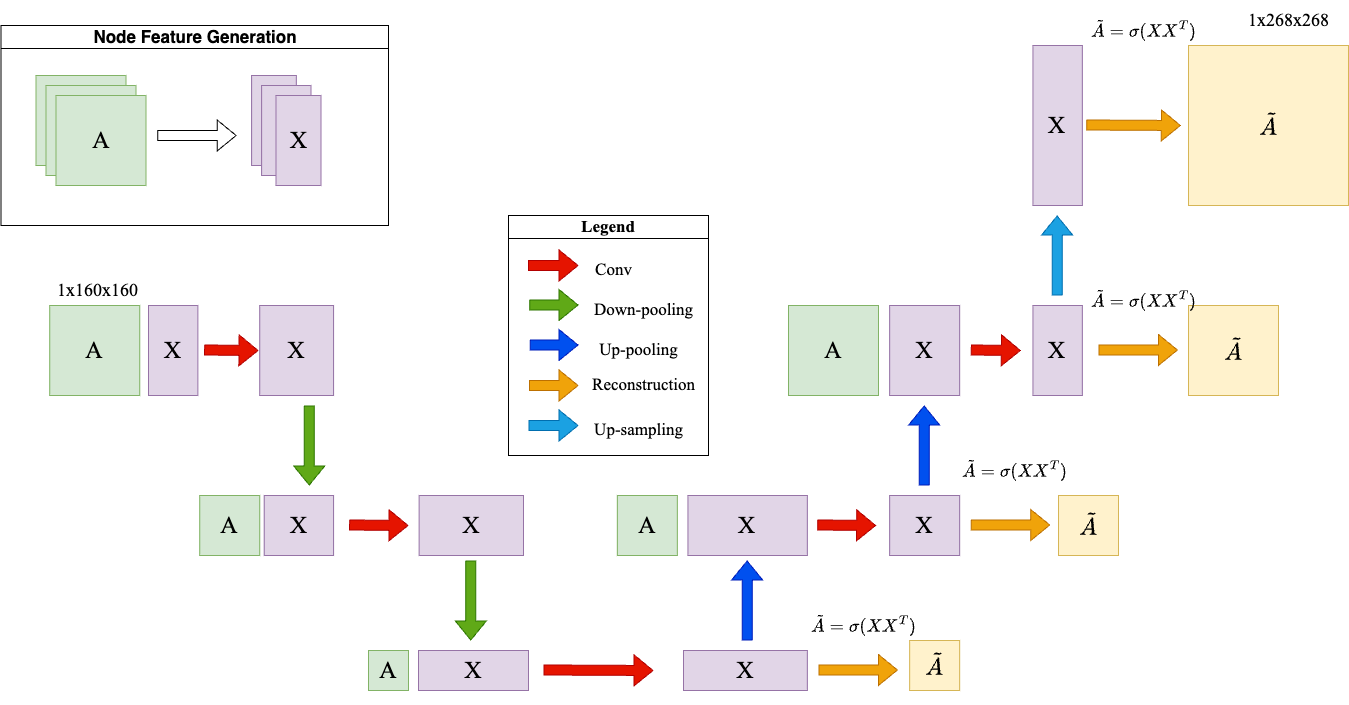Brain connectivity matrix super-resolution using graph neural networks
Group project at Imperial College London as part of the Deep Graph-based Learning (DGL) module by Prof. Islem Rekik.
This project focuses on using generative Graph Neural Networks (GNNs) to predict high-resolution (HR) brain connectivity graphs from their low-resolution (LR) counterparts. This task is motivated by the need to enhance the resolution of brain connectivity data, which is crucial for advancing our understanding of brain function. The problem involves learning a mapping function f that can accurately transform a low-resolution brain matrix ALR into a high-resolution brain matrix AHR. This task is essential because high-resolution brain graphs provide more detailed and precise information about neural connections, which can significantly improve the analysis and diagnosis of neurological conditions. By developing a model that can infer high-resolution connectivity from low-resolution data, we aim to overcome the limitations of current imaging techniques and pave the way for more accurate and insightful brain research.
(Isallari & Rekik, 2021) (Isallari & Rekik, 2020) (Gao & Ji, 2019) (Dwivedi & Bresson, 2021) (Gao & Ji, 2019) (Hamilton et al., 2017) (Xu et al., 2018) (Liu et al., 2017) (Yun et al., 2019)

References
2021
- Brain Graph Super-Resolution Using Adversarial Graph Neural Network with Application to Functional Brain Connectivity2021
- A Generalization of Transformer Networks to GraphsAAAI Workshop on Deep Learning on Graphs: Methods and Applications, 2021
2020
- Graph Super-Resolution Network for predicting high-resolution connectomes from low-resolution connectomesIn International Workshop on PRedictive Intelligence In MEdicine, 2020
2019
- Graph U-NetsIn International Conference on Machine Learning, 2019
- Graph Transformer NetworksCoRR, 2019
2018
- How Powerful are Graph Neural Networks?CoRR, 2018
2017
- Inductive representation learning on large graphsAdvances in neural information processing systems, 2017
- Longitudinal test-retest neuroimaging data from healthy young adults in southwest ChinaScientific data, 2017